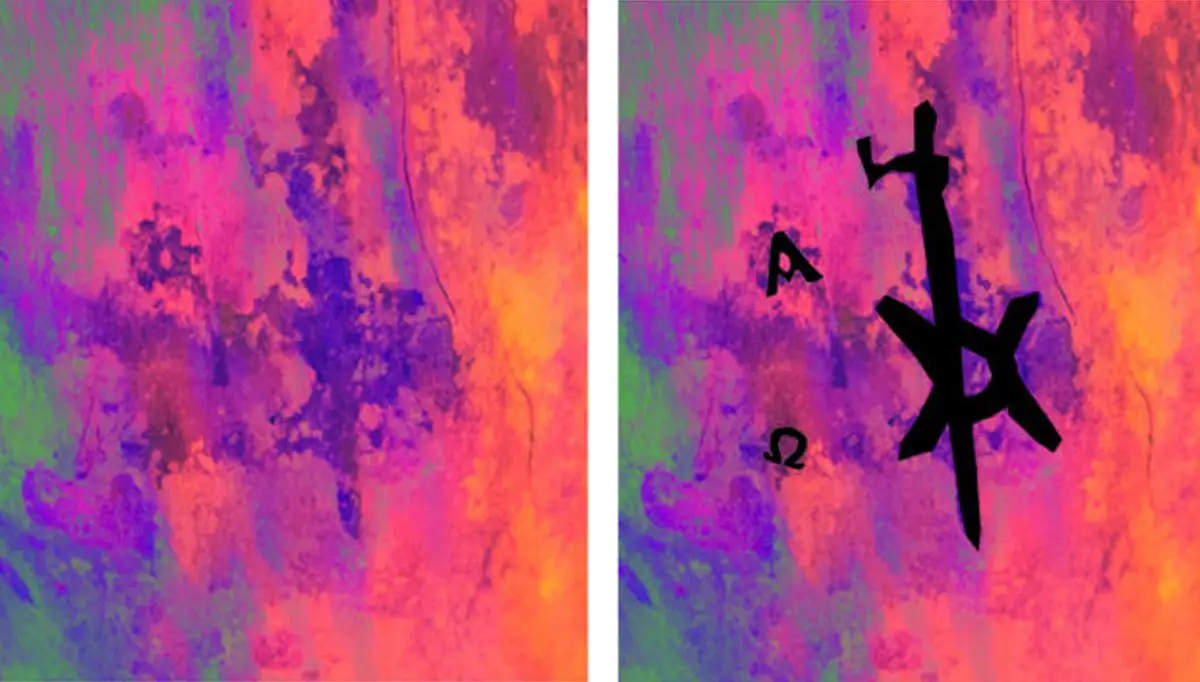Archaeologists from the Polish Centre of Mediterranean Archaeology, University of Warsaw (PCMA UW), have discovered a Christogram tattoo in a medieval Nubian burial.
The discovery was made during excavations at the monastic site of Ghazali, located in the Wadi Abu Dom region of the Bayuda desert, Sudan.
The monastery was likely founded during the late 7th century by King Merkurios, a ruler of the Nubian kingdom of Makuria, in what is today northern Sudan and southern Egypt.
John the Deacon, an Egyptian Christian writing around 768, described Merkurios as the “New Constantine”, suggesting that Merkurios played an important role in the Nubian church within the Makuria kingdom.
The first excavations at Ghazali took place in the 1950’s, with ongoing excavations from 2012 to 2018 conducted by PCMA UW. The excavations revealed the main monastic structure, a church with a basilica layout, cemeteries, a settlement, and evidence that Ghazali was a metallurgical centre for iron smelting.
Recent studies by PCMA UW have discovered a Christogram religious tattoo on a burial at Ghazali, the second only example of the practice of tattooing evidenced in medieval Nubia. The burial comes from a 7th–13th century cemetery, designated Cemetery 1, first excavated during the 2012 to 2018 campaign.
During photo documentation, the researchers identified a Christogram tattoo on the right foot with the Greek letters “alpha” and “omega”. A Christogram is a monogram or combination of letters that forms an abbreviation for the name of Jesus Christ. The letters “alpha” and “omega,” the first and the last letter of the Greek alphabet, stand for the Christian belief that god is the beginning and the end of everything.
“It was quite a surprise to all of a sudden see what appeared to be a tattoo when I was working with the Ghazali collection. At first, I was not certain, but when the images were processed and the tattoo was clearly visible, any initial uncertainties were removed, said Kari A. Guilbault of Purdue University.
Header Image Credit : PCMA UW







